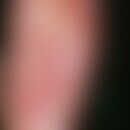Synonym(s)
DefinitionThis section has been translated automatically.
Triiodothyronine (T3) and thyroxine (T4) are bound to transport proteins (binding proteins) and transported. TGB covers 75% of the binding capacity. Furthermore, T3 and T4 are bound to 15% to pre-albumin and 10% to albumin. To a very small extent, T4 is specifically bound to transthyretin (TTR). A small part of the thyroid hormones is present in free form (fT3 and fT4). SHBG (sex hormone-binding globulin) is also able to bind a small proportion of thyroid hormones.
General informationThis section has been translated automatically.
TBG has a molecular mass of about 54 kDa. The protein is produced in the liver and from here it is released into the blood. TBG can bind 1 molecule of a thyroid hormone per molecule.
Note(s)This section has been translated automatically.
The protein binding of T3 and T4 prevents the rapid renal elimination of thyroid hormones. Therefore, the biological half-life of T4 is about 5 to 8 days. For T3 it is about 19h. T3 has a 10 to 20 times lower affinity to TBG. Furthermore T3 does not bind to transthyretin. The biologically inactive reverse T3 (rT3) has a half-life of only about 4 hours due to its even lower binding.
LiteratureThis section has been translated automatically.
- Böhm BO (2018) Thyroid hormones. In: Neumeister B et al. (Eds) Clinical guide to laboratory diagnostics. Elsevier GmbH S. 299



